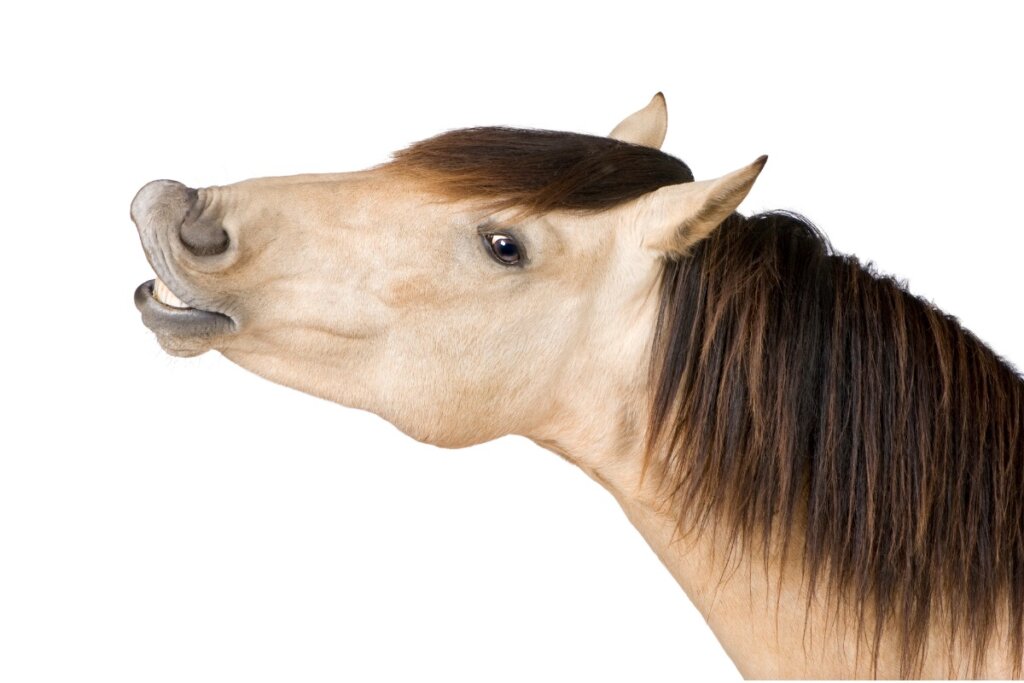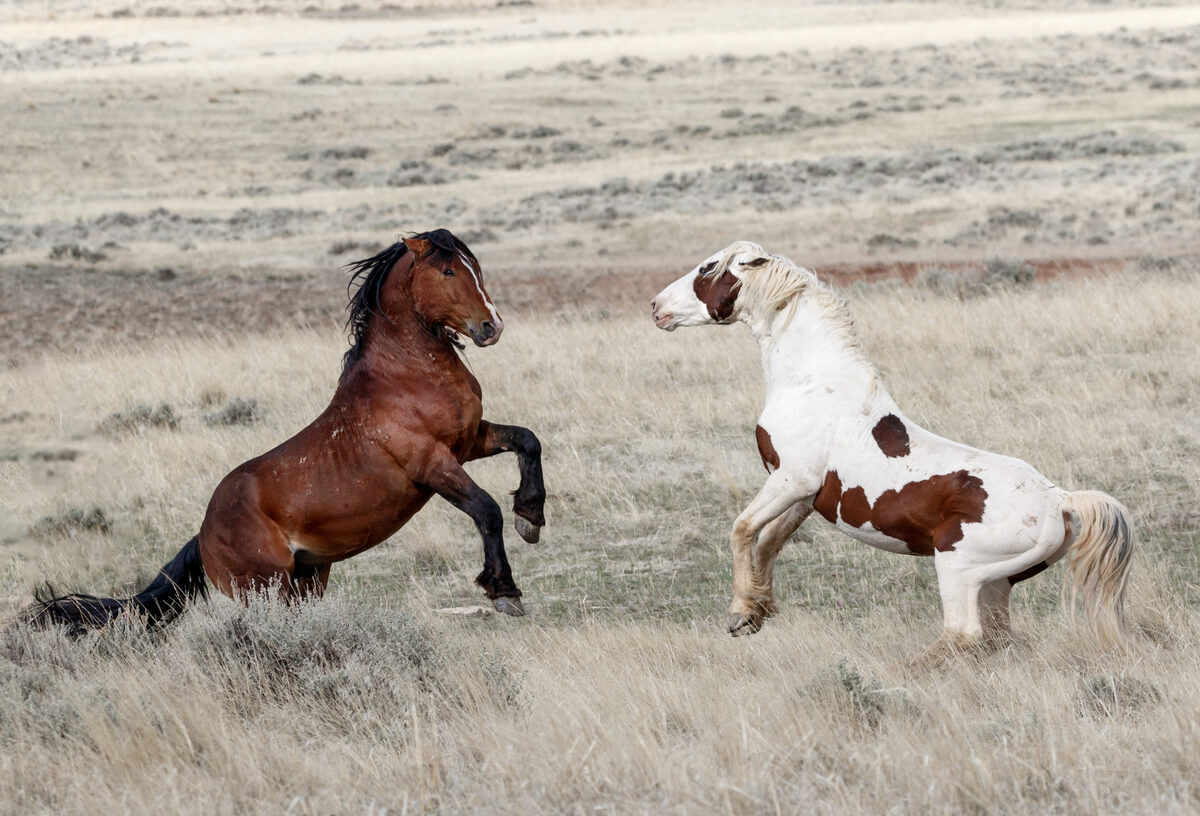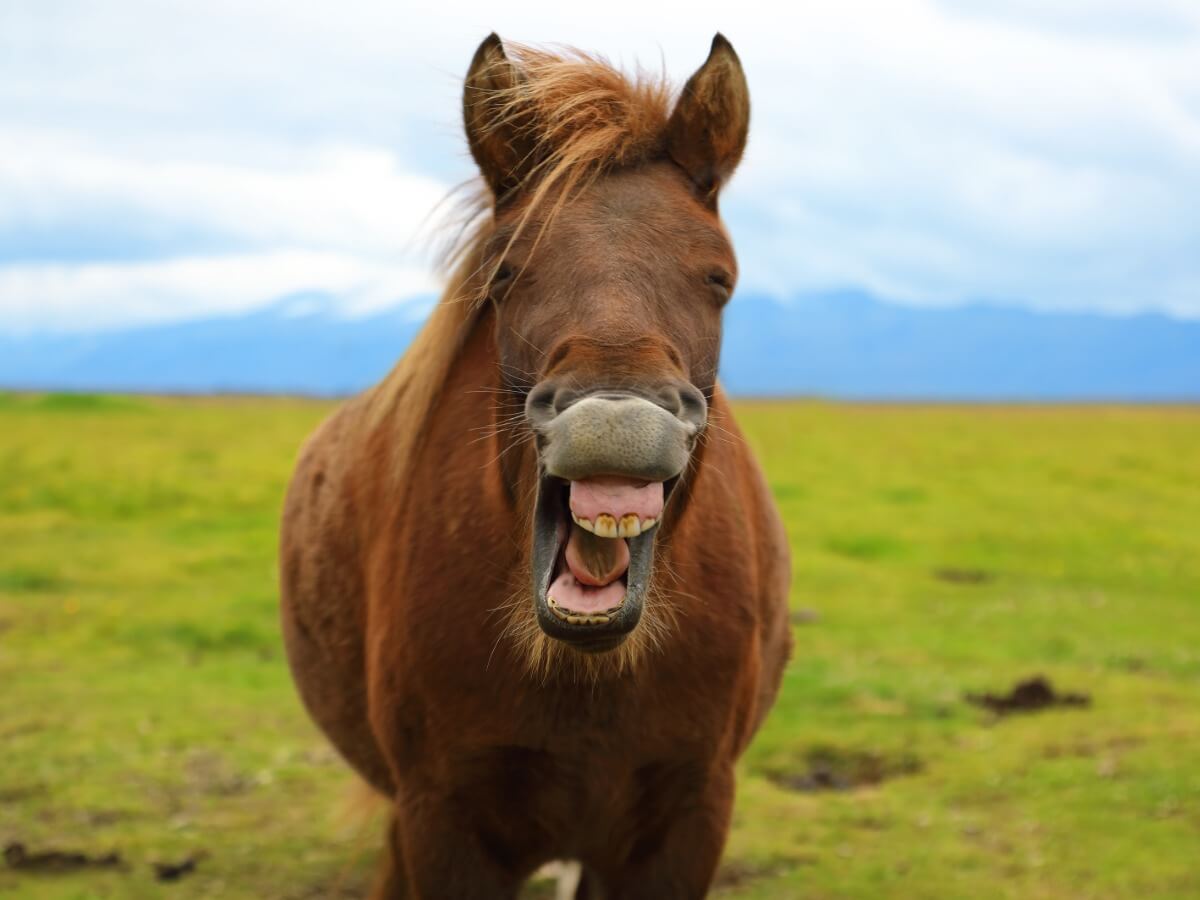Why Do Horses Neigh?

It isn’t only humans that make use of their vocal cords and facial muscles to communicate. Many other animals communicate, and they do so in surprising ways. In the case of horses, they also use different communication mechanisms, but have you ever wondered why horses neigh?
It is common to hear these animals whinny, snort and neigh. Their speech repertoire is overwhelming, and, because of this, it can sometimes be difficult to decipher what a horse is trying to say with all its noise. In this article, we’ll look particularly at why horses neigh.
How do horses communicate with each other?
Among a horse’s communication mechanisms, we find smell, contact, body language, facial expressions, tail movements and oral communication, all of which depend a lot on the context. Experts on the subject say that, through neighing, snorting, and among other oral manifestations, horses express an emotional state.
However, according to German riders Reiner Klimke and Ingrid Klimke, not all horses use their voices in the same way. There are some who hardly ever vocalize and others, in contrast, that greet all the horses they see with a thunderous neigh. Horses have a very marked personality of their own, and so it’s quite normal that not all of them behave the same.

Emotions in horses
Did you know that some horses can feel scared when they see a shadow or when entering dark places? Some are even afraid of noise, such as the whistling of the wind. Others must be taught to get used to people in order not to be scared of them, because being potential prey for other animals, they have the flight instinct encoded in their genome.
The emotions that horses feel influence the social relationships that form between them. However, the great richness of that emotional world makes them curious about everything new, and so it’s normal for them to investigate after initially feeling fear.
These animals aren’t curious by chance. They show this quality because of their instinct to explore the world to find water, food, shelter, and companionship. On the other hand, they have also developed strategies to detect danger signals and to act in the face of something unfamiliar, or rapid movements, which make them flee.
Horses are fearful by nature. As their role in ecosystems is to be the prey of large predators, they’re equipped with very sophisticated escape mechanisms.
Why do horses neigh?
The whinny is one of the horse’s best-known sounds and one of the longest and loudest, although the pitch depends on the intensity of the communication. When you hear a horse neighing, it may be for one of the following reasons:
- Wanting to convey its location to the rest of the group if it’s been separated
- Trying to communicate danger to another horse or a human
- Wanting to welcome someone they haven’t seen for a long time
- Showing affection
- Or, simply, because they’re happy, especially if the neigh is accompanied by non-threatening stamps on the ground.
It’s also quite normal for young horses to reply to others when they neigh and to neigh profusely when they see the feed truck. Regardless of the reason for the sound, most neighs last around 1.5 seconds and are powerful enough to be heard almost 1 kilometer away.
Experts say that, contrary to what the general population tends to believe, the cause of neighing isn’t fear. Rather, it could be a request or a statement, in which – usually – the ears are pricked forward, the neck is erect, and the tail is slightly raised.
Why do they snort?
The snorting of horses is another of the sounds we hear the most from them, but, unlike neighing, it can be associated with feelings of alarm or frustration. The horse snorts, for example, if its stomach hurts, if it wants to take a break, or if it needs to slow down when being ridden.
However, this sound can also mean that the horse is happy and relaxed. For this reason, it’s important to distinguish the snorts that the horse makes when it’s feeling tense or excited, as it can also release the air through long sighs, as in a state of relaxation.
For a long time, it was also believed that the reason for the horse’s snort was to remove phlegm, flies, or objects in the nostrils. However, the study An unexpected acoustic indicator of positive emotions in horses, published in the journal PLOS ONE, found that horses snort when they’re happy.
Based on this premise, the researchers stated that horses that were enclosed and fed low-fiber meals snorted much less than those that lived free, with full availability of hay and grass. In other words, the lower the stress on the animal, the more snorting it produces.
Communication between horses and humans
Studies state that, in interactions between horses and humans, conflicts sometimes occur. These could be avoided if you knew their body signals, their facial expressions, the sounds of their voice, and their emotions.
Therefore, recognizing the language of the horse helps you to interpret what this animal wants to communicate. This could either be because you have frequent contact with one, or simply because you want to learn more about them. Whatever the case, knowing the guidelines of communication with horses is quite enriching.

It’s essential to study and observe the forms of horse communication in order to create good bonds and deepen your knowledge of them. Remember that it isn’t only about riding the horse; the fundamental thing is to respect it. Although some people think of them as a tool for work or carrying things, horses are beings with feelings, emotions, and a personality worth getting to know.
All cited sources were thoroughly reviewed by our team to ensure their quality, reliability, currency, and validity. The bibliography of this article was considered reliable and of academic or scientific accuracy.
Aira, N., & Ibáñez, M. (2013). https://www.produccion-animal.com.ar/produccion_equinos/produccion_equina_en_general/07-comunicacion_equinos.pdf. Departamento de Producción Animal, Centro de Medicina del Comportamiento, Universidad Complutense de Madrid. https://www.produccion-animal.com.ar/produccion_equinos/produccion_equina_en_general/07-comunicacion_equinos.pdf
Horse Hints. (s. f.). Horse Vocalizations: Snorts, Squeals, neighs, etc., What Do They Mean? Recuperado 9 de junio de 2021, de http://horsehints.org/HorseVocalization.htm
Klimke, I., & Klimke, R. (2019). Entrenamiento básico del caballo joven: doma, salto, travesía. J.A.Allen & Co Ltd. https://books.google.com.co/books?id=dhMkCDInrUcC&pg=PA27&lpg=PA27&dq=porque+relinchan+los+caballos+.org&source=bl&ots=QylyRUTMNa&sig=ACfU3U30CFfST14ZFr-PbHyc9ajmD2cudA&hl=es-419&sa=X&ved=2ahUKEwjai7Pn0fzwAhUQSTABHdhMBVsQ6AEwE3oECAgQAw#v=onepage&q=porque%20relinchan%20los%20caballos%20.org&f=false
Mundo Equino. (2020, 9 abril). ¿Por qué los caballos relinchan o resoplan? – Revista Mundo Equino. Revista Mundo Equino. https://revistamundoequino.com/2020/04/09/por-que-los-caballos-relinchan-o-resoplan/
Román, V. (2018, 11 julio). El resoplido de los caballos indicarÃa que están contentos. N+1. https://nmas1.org/news/2018/07/11/caballo-resoplido-ciencia
